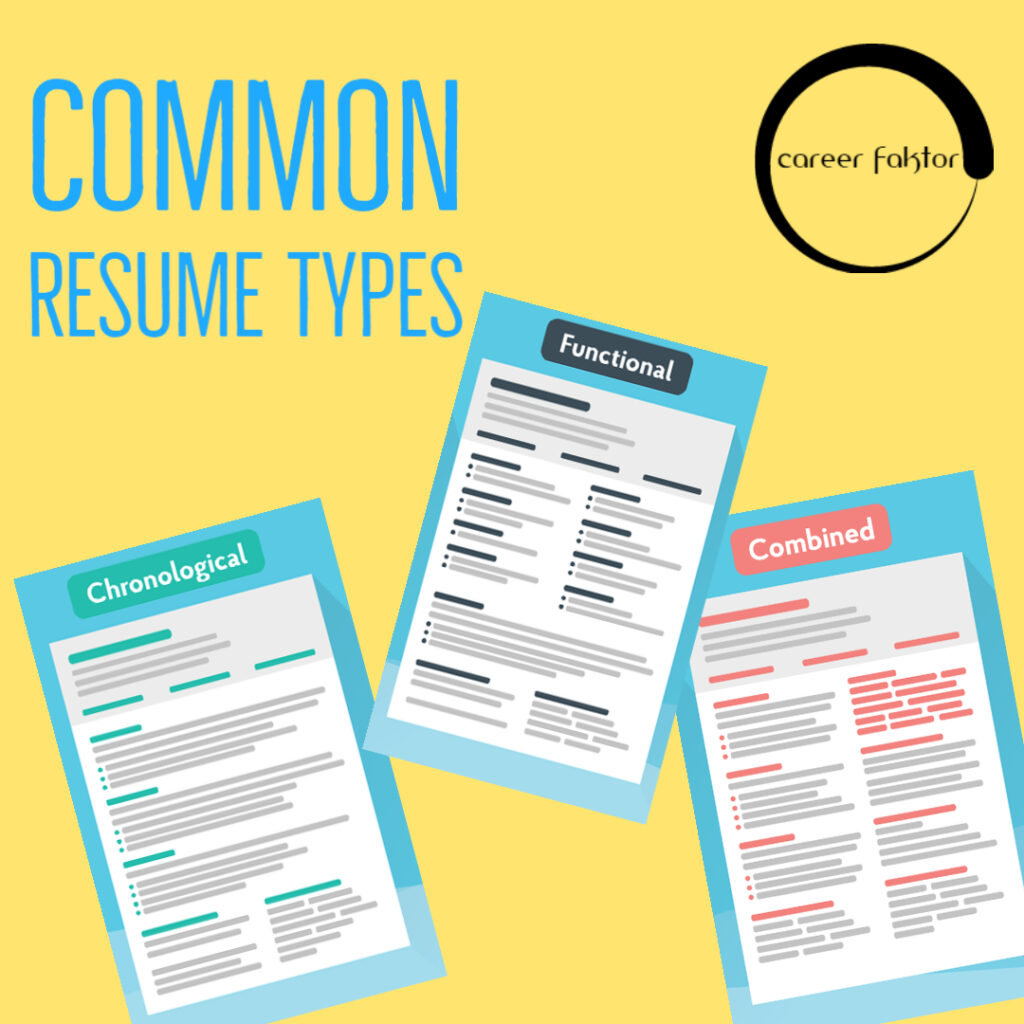There are several commonly accepted types of resumes you can use to apply for job openings. You need to strategize and pick the right resume type that best suits your background, career circumstances, and market needs. As an industry-standard, a resume type is categorized into Functional, Chronological, and Combination.
While there are other resumes types such as video resumes, online resumes, infographic resumes, targetted resumes, one-pagers and visual resumes. I will talk about them in my next writing but lets focus and understand the nuances of using a Functional, Chronological, and Combination resume format here.
Here’s a comparative table that best explains the resume format’s and its pro’s and cons.
| Chronological | Functional | Combination | |
| Overview | Lists your work history in reverse order, starting with your current or most recent job and working backwards. | Focuses on skills and strengths important to employers. Omits specific dates, names, and places. De-emphasizes any spotty work history or career gaps. | Blends the flexibility and strength of the other two types of resumes. |
| Advantage | Easy to write. Emphasizes steady employment record. Employers like to see job titles, level of responsibility, and dates of your work history. | De-emphasizes a spotty work history. Allows you to highlight specific strengths and transferable skills that might not be obvious when outlined in purely chronological order. | Shows off a strong employment record with upward mobility. Show how the skills you have used in the past apply to the job you are seeking. Emphasizes transferable skills. |
| Disadvantage | Calls attention to employment gaps. Skills can be difficult to spot unless they are listed in the most recent job. | No detailed work history. Content may appear to lack depth. Disliked by many employers. It makes them think you may be trying to hide your age, employment gaps, lack of relevant experience, lack of career progression, or underemployment. | Work history is often on the second page, and employer may not read that far. |
| Best used | To emphasize past career growth and development in the same career. Or when the name of a former employer may be significant to prospective employer. | To emphasize transferable skills you have used in volunteer work, paid work, or coursework. Use this or a combination resume if you are a new graduate, have limited work experience, are changing careers or doing freelance work, or you do not want to call attention to your age. | To show off your skills developed throughout your work history instead of the specific positions you have held. Use when you are making a career change and names of former employers may not be obvious to prospective employer. |
| Don’t use if | There are gaps in your work history, when calling attention to your age could be a problem, you have changed jobs often, or you are entering the job market for first time or after a long absence. | You want to emphasize growth or development or if your duties and responsibilities in recent jobs were limited. | Your experience is limited, or there are wide gaps in your work history. |

